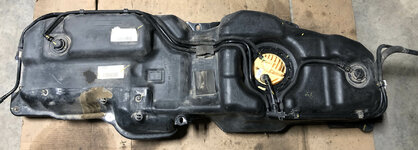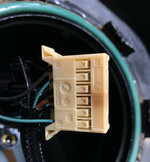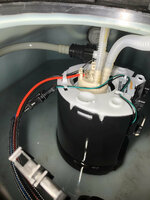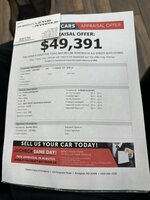In late November, our previously reliable LR4 died 4 miles down the road, stranding my wife in a cellular dead zone. Fortunately there were houses nearby with landlines. (Remember those? How quaint!) After getting towed home hours later, the engine would start in the morning, run for 3-5 minutes, then just shut off and not restart even many hours later. Same result every morning. The ONLY code stored was an unhelpful "Fuel pump A control circuit/open". The LR forum guys said to try swapping the fuel pump control relay first, which didn't cure it. Next was the fuel pressure sensor, nope, that wasn't it either. Fudge.
The only remaining plausible item was the fuel pump, located in the tank. Dropping the tank is not as fun as it sounds. Adding to the levity, the JLR FSM is atrocious. I thought Mercedes manuals were terse (and they can be, especially 90's and newer, and WIS) but JLR is positively terrible. Complicating things further, not many people have posted detailed DIY / How-To threads either on Land Rover forums, or videos on YouTube. There's a bunch of piecemeal info but nothing comprehensive for these particular jobs. Tons of info on the LR3 but that doesn't have the same fuel system as the LR4.
I find the lack of LR4 information odd, considering there were allegedly over 50k of the LR4 imported to the USA, and ~350k produced worldwide. Those are huge numbers. It seems many / most owners have repairs done at the dealer or indy shops. Maybe that will change as the truck ages. The LR4 was sold in USA from 2010-2016 model years, roughly similar to a W212 or X/W166, which are kinda new for DIY'ers.
Anyway, if you are bored and want to watch as GSXR pulls his hair out dealing with a British truck, here are some links for your enjoyment:
TLDR: Turns out the electrical connector from the pump had signs of excess heat causing a bad connection, INSIDE THE TANK. A new pump and new flange (with pass-through electrical connector) cured it.
I'm sure the X166 would be more complicated, although the WIS procedures are probably better than JLR. (And, the M278 or M157 are nightmare motors, not sure if I'll go there someday.)


The only remaining plausible item was the fuel pump, located in the tank. Dropping the tank is not as fun as it sounds. Adding to the levity, the JLR FSM is atrocious. I thought Mercedes manuals were terse (and they can be, especially 90's and newer, and WIS) but JLR is positively terrible. Complicating things further, not many people have posted detailed DIY / How-To threads either on Land Rover forums, or videos on YouTube. There's a bunch of piecemeal info but nothing comprehensive for these particular jobs. Tons of info on the LR3 but that doesn't have the same fuel system as the LR4.
I find the lack of LR4 information odd, considering there were allegedly over 50k of the LR4 imported to the USA, and ~350k produced worldwide. Those are huge numbers. It seems many / most owners have repairs done at the dealer or indy shops. Maybe that will change as the truck ages. The LR4 was sold in USA from 2010-2016 model years, roughly similar to a W212 or X/W166, which are kinda new for DIY'ers.
Anyway, if you are bored and want to watch as GSXR pulls his hair out dealing with a British truck, here are some links for your enjoyment:
Main diagnostic discussion thread:
https://www.landroverworld.org/thre...00-6c-fuel-pump-a-control-circuit-open.45696/
Thread started by someone else with sort of, maybe, helpful info on tank removal:
https://www.landroverworld.org/thre...k-to-replace-the-fuel-pump-let-me-know.45128/
Replacing the pump after the tank was finally out of the truck:
https://www.landroverworld.org/threads/how-to-diy-replacing-lr4-in-tank-fuel-pump.45752/
TLDR: Turns out the electrical connector from the pump had signs of excess heat causing a bad connection, INSIDE THE TANK. A new pump and new flange (with pass-through electrical connector) cured it.
I'm sure the X166 would be more complicated, although the WIS procedures are probably better than JLR. (And, the M278 or M157 are nightmare motors, not sure if I'll go there someday.)













